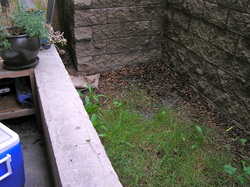
My daughter lives in a small studio apartment in Pasadena. Outside her front door is a community courtyard where the kids ride their skateboards. Behind her apartment she had a small space filled with litter. Melanie was looking for a place to sit outdoors with some degree of privacy. The filthy pit was her only option
Melanie’s space was further complicated by a raised walkway that divided a small area into two even smaller sections. Eight feet from her back door is a concrete wall with a busy street on the other side. If Melanie was to keep the walkway clear for access to the gas meters located two apartments further along the walkway, her outside living area was confined to the five by twelve foot section that was three feet lower than the walkway. Actually, some of the twelve feet belongs to her neighbor. We commandeered his space with his enthusiastic blessing.
At the east and west end of the pit, we had eight foot high concrete walls running perpendicular to the apartment. They effectively walled off the pit creating a very private space with excellent shade at one end.
Once we had raked the gravel until it was level, it was time to go shopping. We were somewhat limited in our choices because everything must ride home in Melanie’s compact sedan.
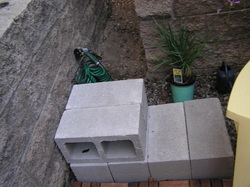
Every garden must have plants. Knowing my daughter, I suggested succulents for this area that might get over one hundred degrees in the summer. Still, she needed something with big leaves to soften the walls so we selected a banana because they grow fast. She also wanted a Passion fruit because she loves the flowers. We’ll see if it gets enough water to live.
After the shopping we were exhausted and crashed for the night. The next day Melanie and her sister Melissa left early to do more shopping. I just handed them money and stayed on the sofa. They returned with potting soil, pots, and modular tiles for decking.
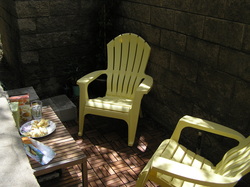
On the second day of work, Melissa repotted all the plants into the attractive pots. I took pictures, directed, swept dirt, and washed Melanie’s two yellow outdoor chairs. Melanie snapped the decking pieces together covering the gravel in the pit. We moved a small bench that could be used for a table or seating into the pit.
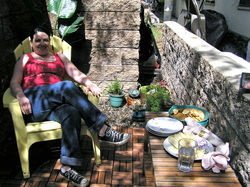
The garden still needs a water feature or some statuary in the shadiest corner. The lizard might appreciate a low bowl of water. Melanie is considering Japanese style lanterns hanging from the railing of the deck above for lighting. Perhaps a row of candles along the walkway wall would be sufficient.
For now, this pleasant little garden is a joy to look out on and will provide a private place for sitting outdoors. Perhaps the single man next door, will decide to visit my single daughter in this enchanting garden.
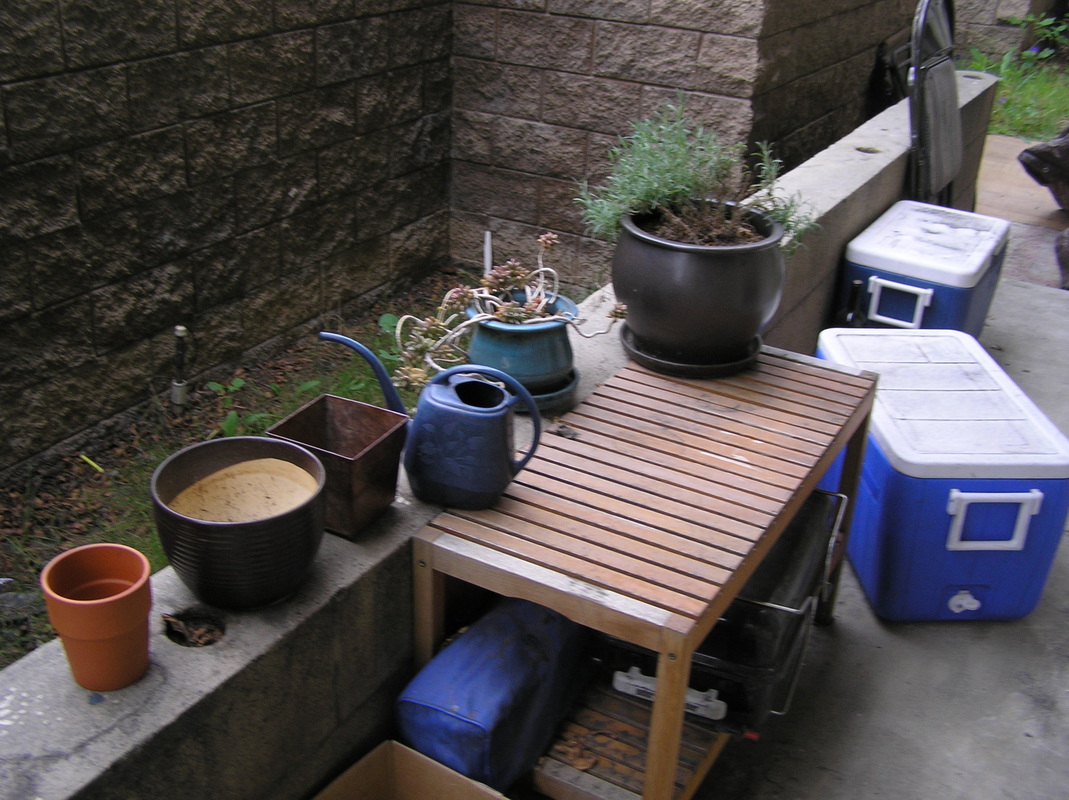
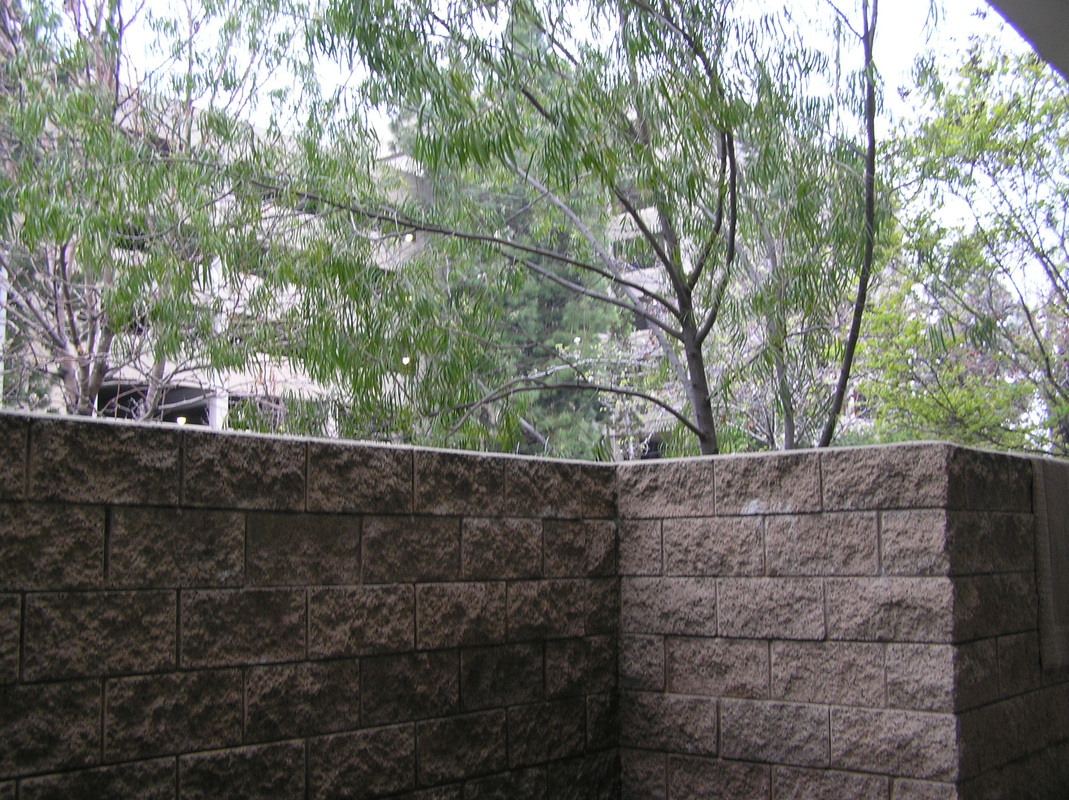
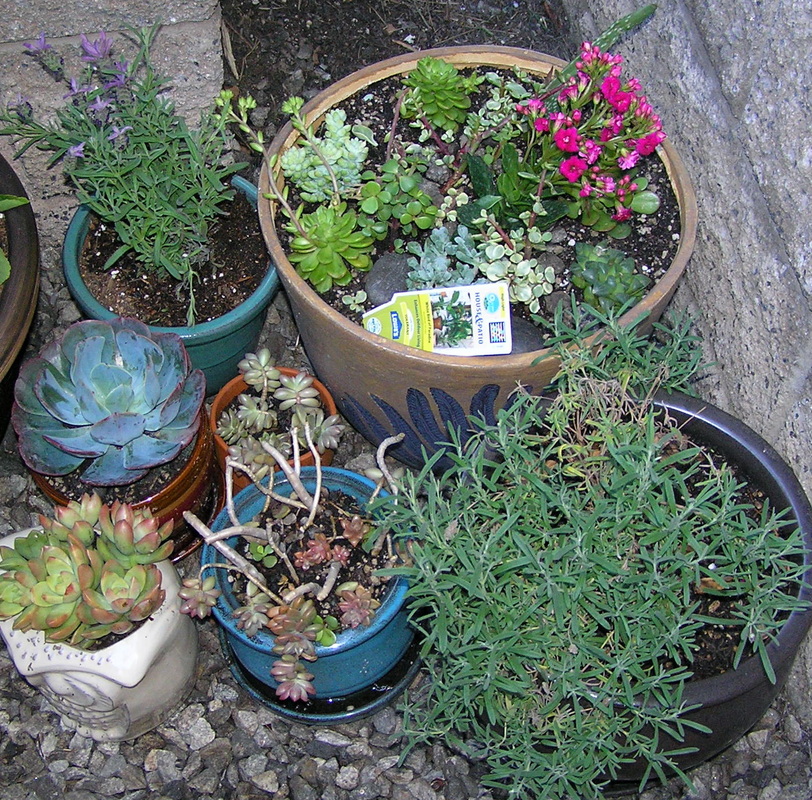
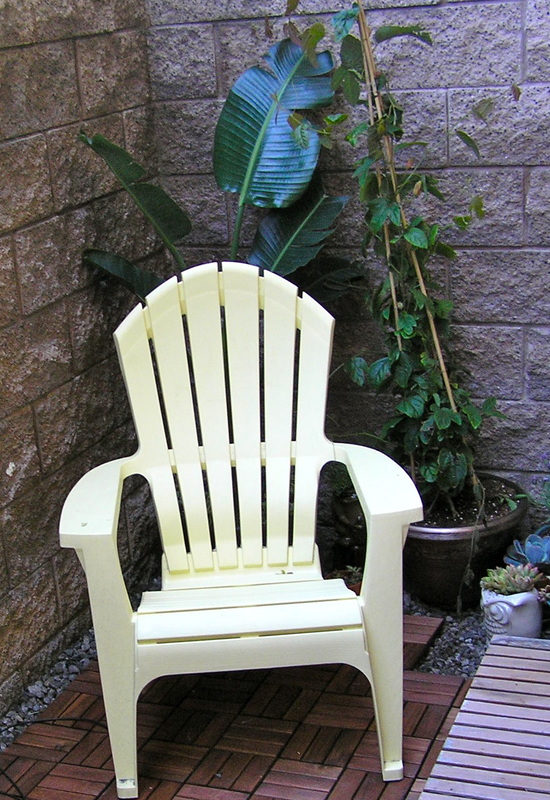

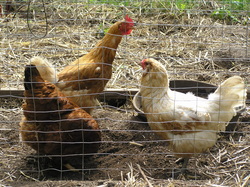
 RSS Feed
RSS Feed